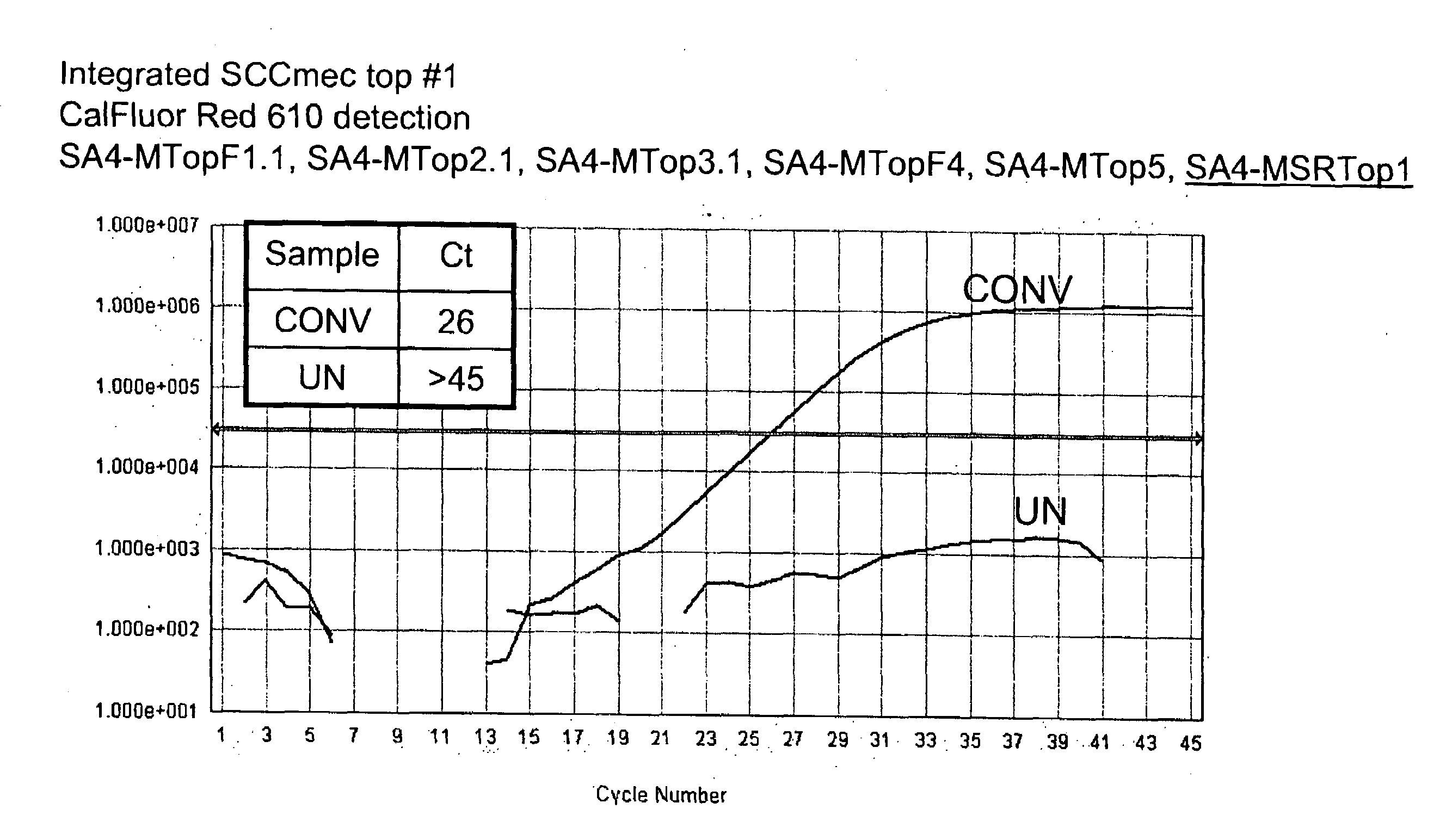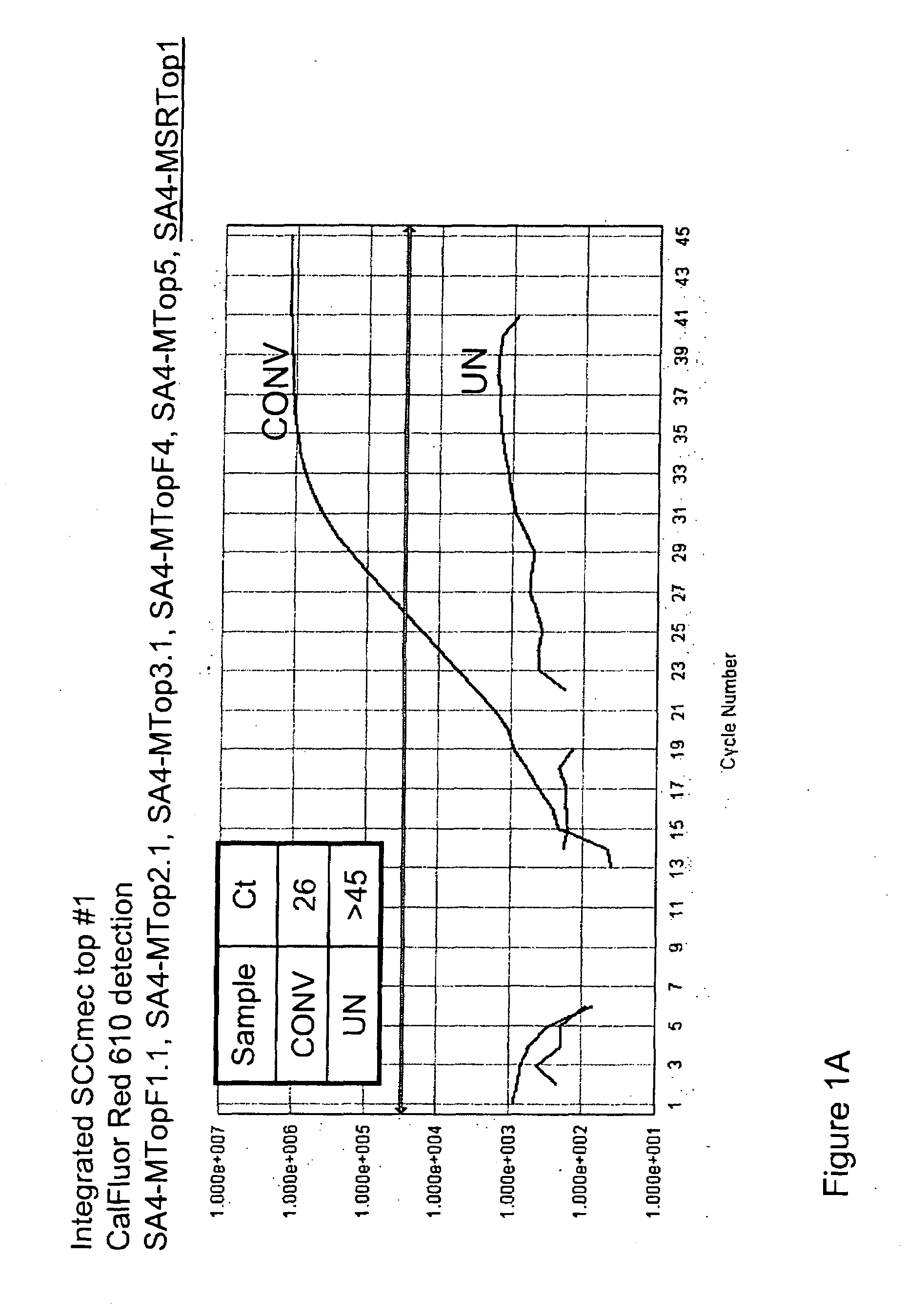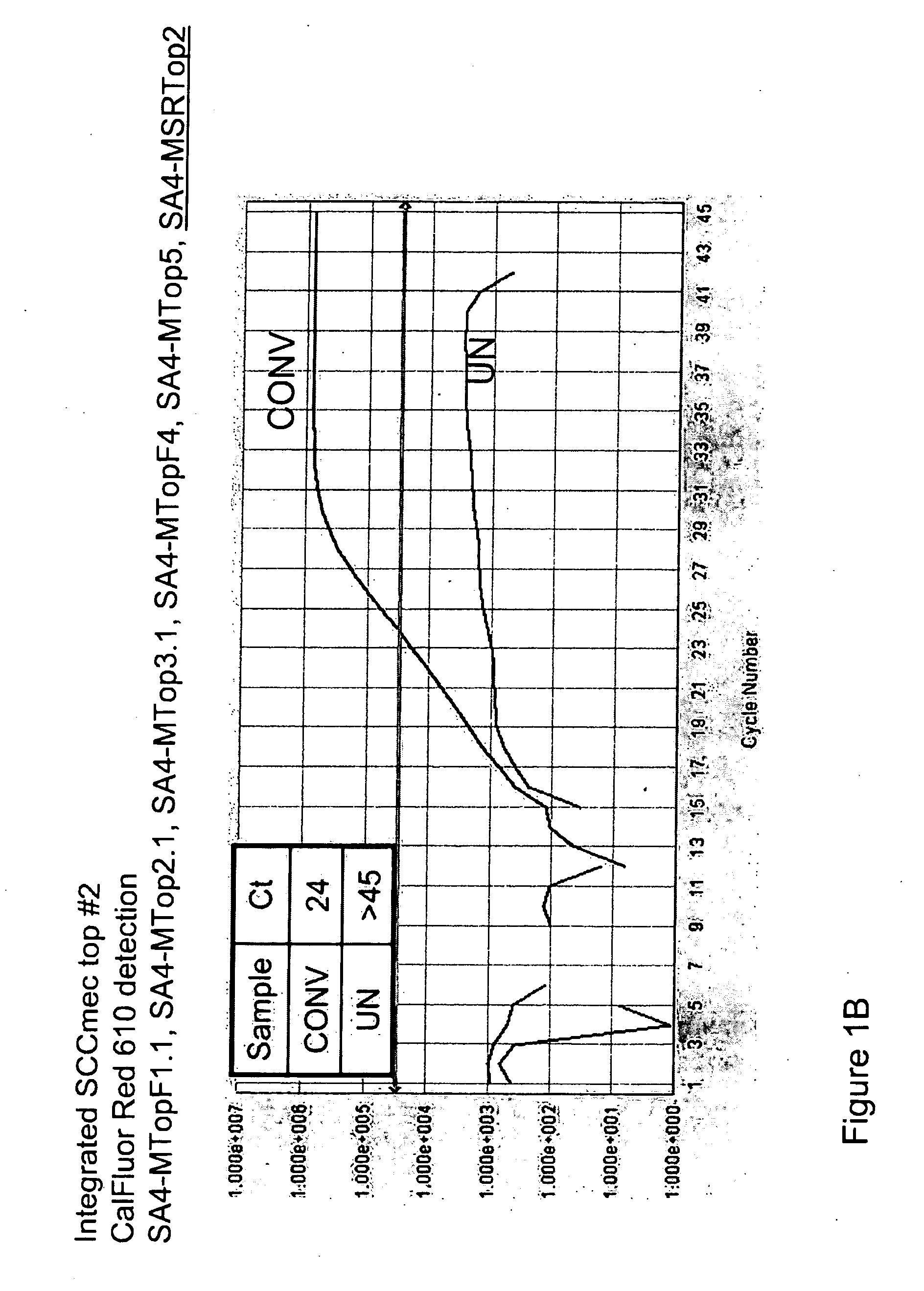Detection of methicillin-resistant and methicillin-sensitive staphylococcus aureus in biological samples
a technology of methicillin-resistant and methicillin-sensitive staphylococcus aureus, which is applied in the field of pathogen detection, can solve the problems that detection of meca alone is not sufficient to identify mrsa directly from clinical samples, and mrsa represents a significant threat to public health, so as to increase the detection of target nucleic acids
- Summary
- Abstract
- Description
- Claims
- Application Information
AI Technical Summary
Benefits of technology
Problems solved by technology
Method used
Image
Examples
example i
Conversion of Native Nucleic Acids to Sequence Modified Nucleic Acids
[0099]Genomic DNA was extracted from 6 nasal swab specimens using the QIAamp™ mini blood kit (Qiagen) extraction procedure with the ATL buffer modification. Nasal swab specimens were stored at −20° C. prior to extraction. Just prior to extraction, the swabs were thawed at room temperature for 20 minutes, 500 μL 1×PBS was added to the swab and the vial containing the swab followed by gentle agitation to mix. 450 μL of the suspension was then transferred to a 1.5 ml microcentrifuge tube and the suspension was centrifuged at 14,000 rpm for 10 min. The supernatant was carefully aspirated and the pellet was resuspended in 180 μL of Buffer ATL from the QIAamp™ mini blood kit. This kit was used to extract DNA according to the manufacturer's instructions. Eluted genomic DNA was split into two samples: one for conversion of nucleic acids to sequence modified nucleic acids (“converted DNA”) and the other was not converted (“...
example 2
Amplification of Sequence Modified Nucleic Acids
Top Strand Assays
[0101]To detect the sequence-modified top strand of integrated SCCmec, seven forward primers and two Scorpion™ oligonucleotides containing a reverse orfx primer and probe were designed. These primers detect the top strand of sequence modified integrated SCCmec MREJ (mec right extreme junction), types i & ii, iii, iv, v, and vii (Table 1). The forward primers were each specific to a single SCCmec type, but the Scorpion™ primer / probe, which hybridizes to orfx was not specific for any single SCCmec type. One Scorpion™ primer / probe and five forward primers are combined to detect sequence-modified SCCmec cassette types ii, iii, iv, v, and vii.
[0102]To determine the specificity of the primers shown in Table 1 for sequence-modified top strand of integrated SCCmec, samples of “converted DNA” or “unconverted DNA” were analyzed in singleplex reactions. A 10× Primer Mix was prepared using 0.1×TE pH 8 as the diluent. Final concent...
example 3
Multiplex Amplification and Detection of Sequence-Modified Nucleic Acids
[0110]A multiplex assay for sequence-modified spa, mecA, integrated SCCmec, and an internal control, was performed using the following Scorpion™ oligonucleotides and primers. A 10× Primer Mix was prepared using 0.1×TE pH 8 as the diluent. Final concentrations of each component in the 10× mix indicated in parenthesis: SA5-MSFTop1 (2 μM); SA5-MTopR1 (2 μM); SA1-MSFTop1 (2 μM); SA1-MTopR1 (2 μM); SA4-MSRTop2 (2 μM); SA4-MTopF1.1 (2 μM); SA4-MTop2.1 (2 μM); SA4-MTop3.1 (2 μM); SA4-MTopF4 (2 μM); SA4-MTopF5 (2 μM); IC-noloop-SFP-Dx2-DQ (1 μM); IC-SR4-Dx2 (1 μM). The reaction mix for a single well of a 96-well optical PCR plate included the following: 12.5 μL 2× Master Mix; 2.5 μL of 10× Primer Mix (components listed above); 4.0 μL Nuclease-free water; 1.0 μL Internal control amplicon; 5.0 μL bisulfite converted genomic DNA template (250 pg). The conditions for the real time PCR run on a Applied Biosystems AB7500 were...
PUM
 Login to View More
Login to View More Abstract
Description
Claims
Application Information
 Login to View More
Login to View More - R&D
- Intellectual Property
- Life Sciences
- Materials
- Tech Scout
- Unparalleled Data Quality
- Higher Quality Content
- 60% Fewer Hallucinations
Browse by: Latest US Patents, China's latest patents, Technical Efficacy Thesaurus, Application Domain, Technology Topic, Popular Technical Reports.
© 2025 PatSnap. All rights reserved.Legal|Privacy policy|Modern Slavery Act Transparency Statement|Sitemap|About US| Contact US: help@patsnap.com



